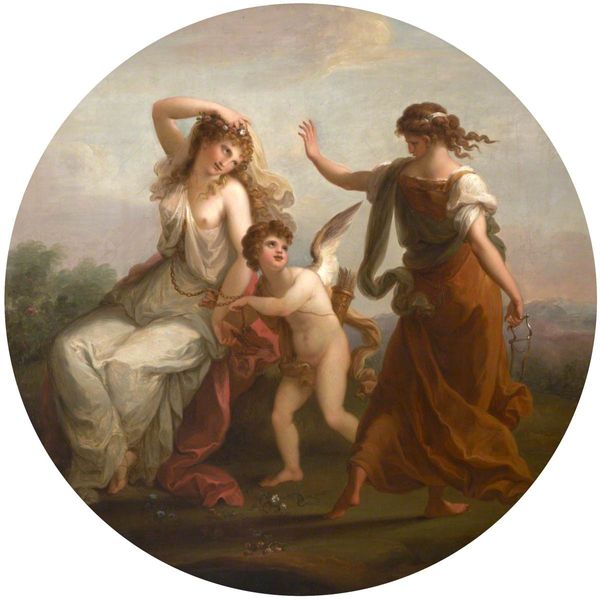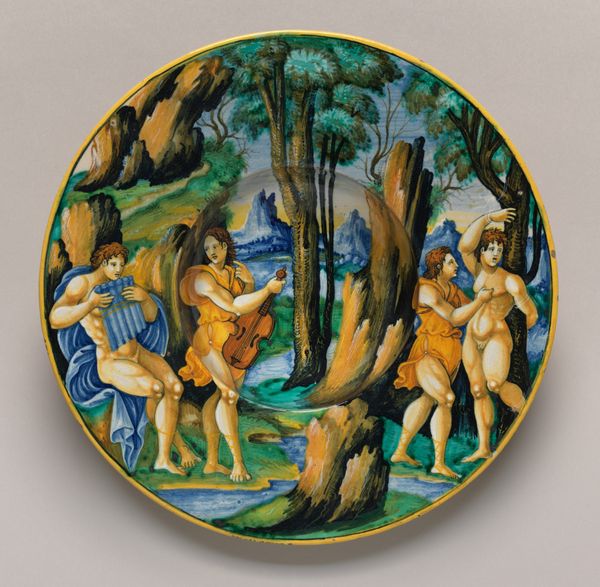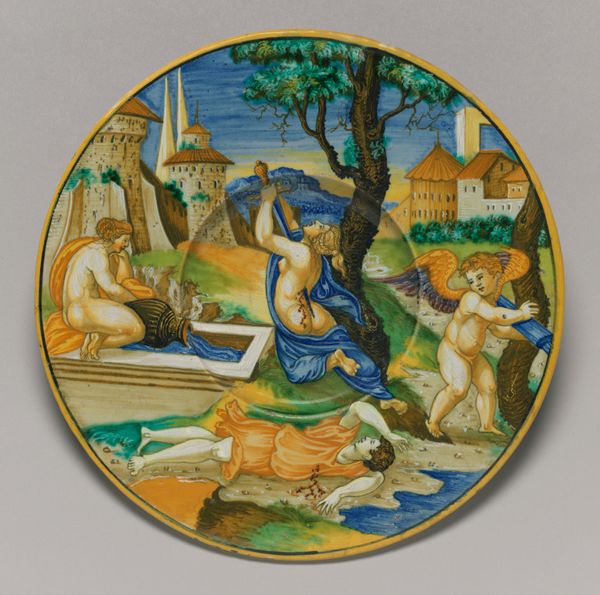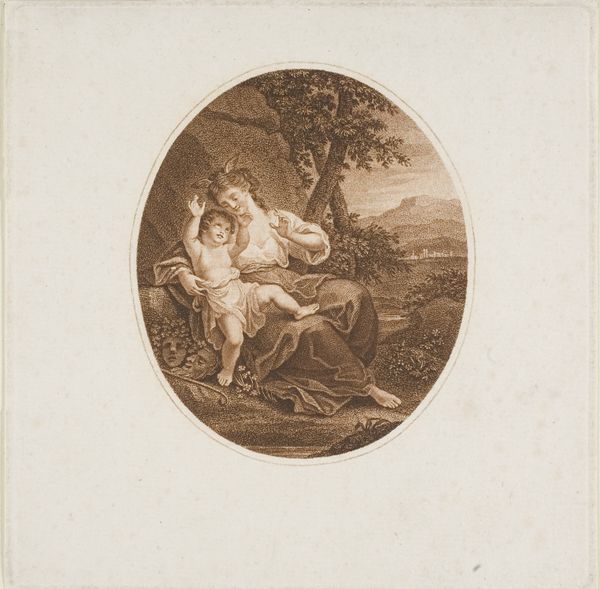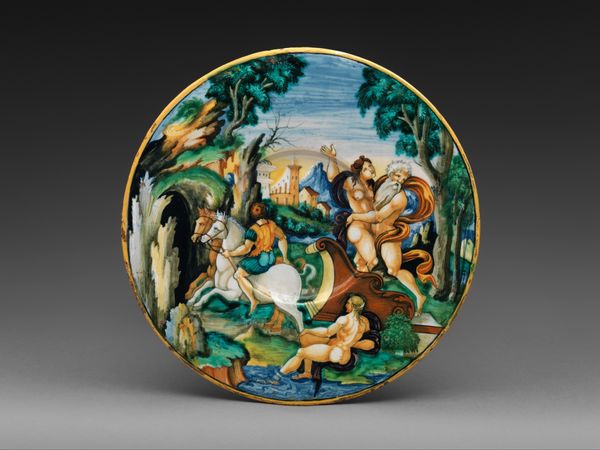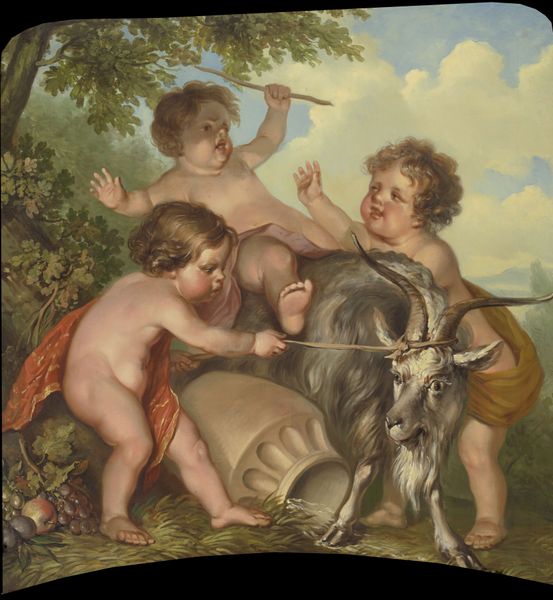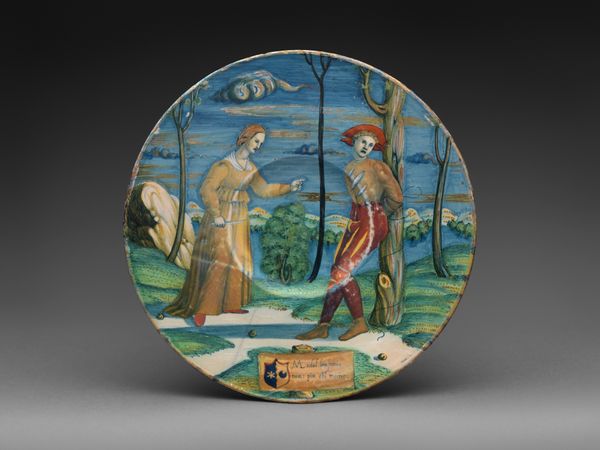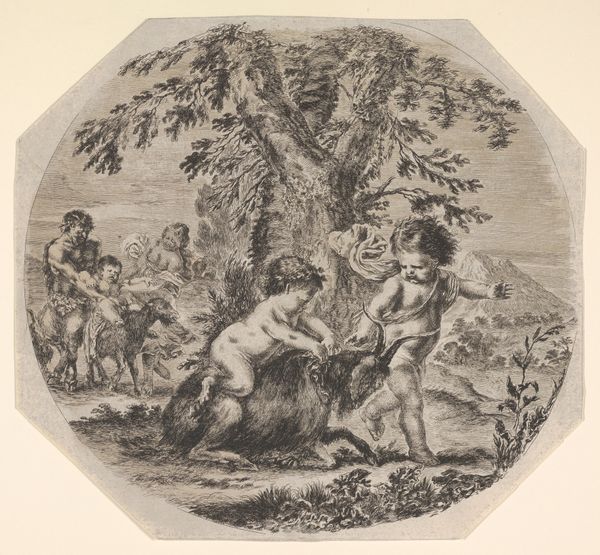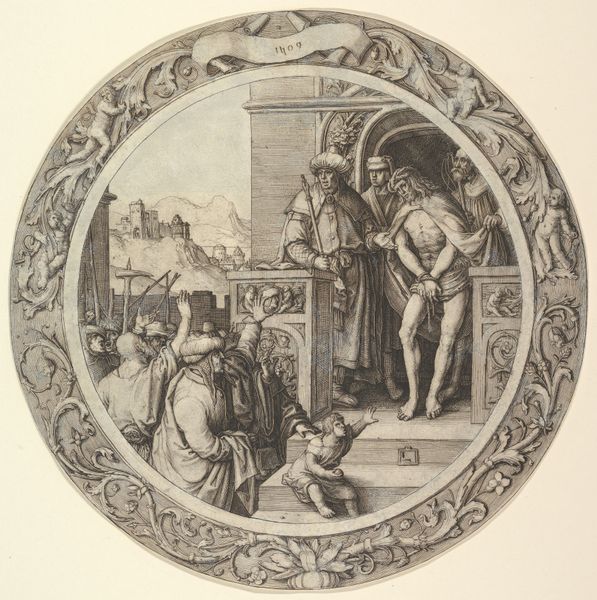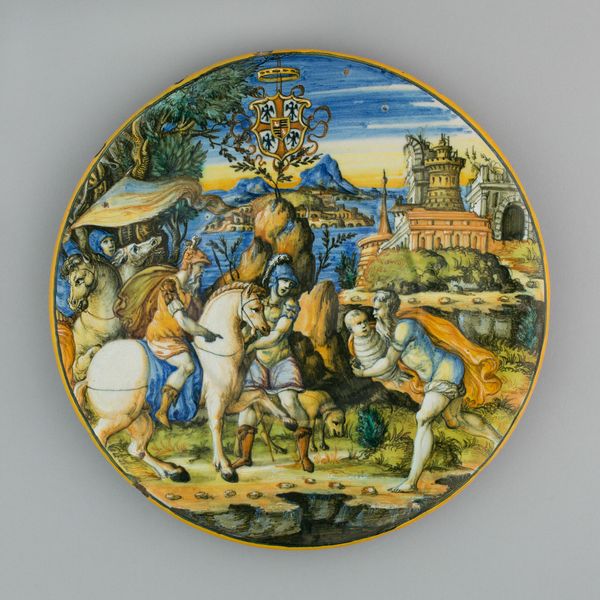
Three dancing nymphs and a reclining cupid in a landscape 1767 - 1777
0:00
0:00
Dimensions: Diameter (without plaster frame): 41 3/4 in. (106 cm); Diameter (with plaster frame): 54 in. (137.2 cm); Depth: 6 1/2 in. (16.5 cm)
Copyright: Public Domain
Curator: Look at this captivating roundel—Antonio Zucchi's oil painting, "Three Dancing Nymphs and a Reclining Cupid in a Landscape," probably painted sometime in the late 1760s or 70s. Currently, it calls the Metropolitan Museum of Art home. What springs to mind when you first glance at it? Editor: What springs to mind? Cake decorations, but like, expensive cake decorations. The painting mimics porcelain so successfully; its purpose must have been primarily decorative, yes? Note how he presents materials, making you focus more on the painting as material itself. Curator: Absolutely, Zucchi seems more concerned with surface and style rather than narrative depth. Observe how the Rococo fondness for light, airy colours interacts with the round format itself: almost weightless, the landscape acts as an idealized background for figures arranged according to graceful, choreographic needs. What materials do you suppose Zucchi was employing to realize this impression? Editor: I want to know what was underneath—was he building layers? I imagine Zucchi was highly attentive to material. To maintain the translucent quality of his paintings, did Zucchi grind and mix his pigments on site, allowing his landscape view to be influenced in real time by the availability of local materials and studio preferences? It appears likely Zucchi prepped with grounds such as gesso before moving towards pigment layering for details on characters. I do wish it was less reliant on conventional painting materials, though. I can't find signs of new ground or inventive usage, only repetition! Curator: Well, Zucchi lived and worked in a commercial context in England. "Invention" would've been perceived as somewhat bizarre and, perhaps, economically undesirable. Still, if one looks past his economic imperatives one discerns hints toward that "certain something"—observe how these women have linked up via ribbons or garland in subtle defiance: in what way does that detail subvert expectation with your material lens on, can we understand how artistic labor relates within constraints against it like consumer preferences Editor: The means through which it reaches completion; who benefited; under what conditions—all provide further clues to comprehend "invention". This detail signifies constraint's limitation. This work exists, despite the labor conditions for the average 18th-century artist involved primarily producing decor instead creating "masterpieces". Curator: In its quiet way, this almost dream-like composition makes Zucchi more interesting of artists involved heavily during the late-1700s when the Neoclassical movement had begun brewing from the underground of Baroque excess while Romantic aesthetics was growing slowly under different schools--despite not adhering either philosophy alone: what exactly drives innovation forward? He hints where these women, though controlled still, challenge the "naturalness". Thank-you to highlighting crucial perspectives through materials' eyes; the art shines clearer for their analysis being heard by even casual consumers just wandering around for an art excursion!. Editor: Always great examining creation! It pushes us beyond accepted values.
Comments
No comments
Be the first to comment and join the conversation on the ultimate creative platform.


